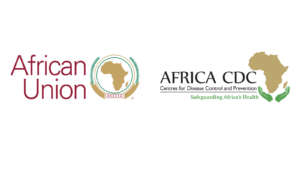The Global Accountability Platform (COVID GAP) blog series.
August 3, 2022
By Talkmore Maruta, Senior Biosafety and Biosecurity Officer, Africa CDC and Nellie Bristol, COVID GAP

With its rapidly growing urban population, high burden of infectious disease, and widespread gaps in health care capacities, Africa is particularly vulnerable to potentially devastating epidemics. The Africa Centres for Disease Control and Prevention (Africa CDC) has been on the forefront of addressing the issue. One important example is the Biosafety and Biosecurity Initiative, which aims to improve the handling of dangerous substances across the continent. Aided by new prominence given to biosafety and biosecurity as a result of COVID-19, working together with African Union Member States and supported by regional and international partners, Africa CDC has made significant progress toward a regional approach to capacity building. With its focus on achieving locally driven priorities and establishing uniform standards and training across all countries, the Biosafety and Biosecurity Initiative 2021-2025 Strategic Plan could be a successful model for other regional approaches to improving health emergency preparedness and response.
Biosafety and biosecurity—protecting people from exposure to toxins and ensuring their safe storage and use—are key components of health security. Yet many African countries lack the laboratory, industrial, and environmental safeguards required. African biosafety and biosecurity capacities show an average score of only 32%, as judged by World Health Organization evaluations conducted between 2016-2019. Similar underdevelopment was reflected in the latest Global Health Security Index (2021). Backed by the Nuclear Threat Initiative, Global Affairs Canada’s Weapons Threat Reduction Program, Open Philanthropy Project, the US Centers for Disease Control and Prevention, and the US Defense Threat Reduction Agency, Africa CDC launched the Biosafety and Biosecurity Initiative in 2019 to help address the problem. With the onset of COVID-19 came a proliferation of testing and research sites on the continent as well as renewed awareness of the threat dangerous pathogens pose to health and economies, circumstances that added urgency to the project.
The initiative focuses on five core areas 1) development of a model biosafety and biosecurity legal framework; 2) establishing and operationalization of five multi-sectoral and multi-expert Regional Biosafety and Biosecurity Technical Working Groups tasked with coordinating the implementation of the initiative; 3) creating and implementing a regulatory and certification framework for institutions handling high consequence pathogens and toxins; 4) development and implementation of a Regional Training and Certification Program for biosafety and biosecurity professionals, and; 5) strengthening national public health institutes and national reference laboratory biosafety and biosecurity capacities to prepare them to detect and respond to biological threats.
The initiative’s legal framework, now working its way through the African Union (AU) approval process, will provide standards countries can use to improve their current regulatory structure or adopt wholesale. The framework is designed to enable countries to comply with the International Health Regulations, the Biological Weapons Convention, and United Nations Security Council resolutions. It outlines establishment of a lead entity responsible for regulating biosafety and biosecurity, development of national standards, and authority for assessing risk of biological agents. It also provides for regulation of laboratories and facilities handling high consequence toxins, and education, training, and human resources development for personnel. Transfer, storage, and disposal of agents and toxins of concern also are covered, as is the prohibition of actions related to producing biological weapons. In addition to the framework, Africa CDC has developed an advocacy and communications strategy to generate public and political support for the initiative.
As the AU consists of 55 countries that contain a range of languages, cultures, political systems, and levels of available resources, workshops were held in each subregion —East, West, North, South, and Central— to better understand specific needs and priorities. Those consultations fed into development of the legal framework. Each subregion has established its own technical working group to oversee implementation. From an international financing perspective, the initiative offers clear goals and deliverables by which to measure progress.
While nearly half of the initiative has been achieved, its full implementation depends on additional funding and technical personnel. While Africa CDC is requesting a budget of $18 million for the five-year initiative, only $5 million has been raised to date. If fully funded, implementation in countries with existing biosafety and biosecurity protocols could occur within 3-5 years. Those with partial development of capacities will need 5-10 years, while those with no structures will need as many as 15 years to come into compliance.
COVID-19 provided unprecedented impetus for improving biosafety and biosecurity throughout the world. Africa in particular is in urgent need of proper safeguards. Africa CDC’s Biosafety and Biosecurity Initiative lays out a country-directed plan that will enhance and standardize capacities throughout the continent while providing a model for effective preparedness improvements that brings together international partners, regional authorities, and individual countries.
The Duke Global Health Innovation Center is a proud partner of the COVID Global Accountability Platform (COVID GAP). The COVID GAP blog aims to provide thoughtful, timely analysis and insights on important news and developments, guided by our ongoing research, analysis, and stakeholder engagement.
Return to the Duke Global Health Innovation Center blog series.
Visit the Innovations in Healthcare blog series.
